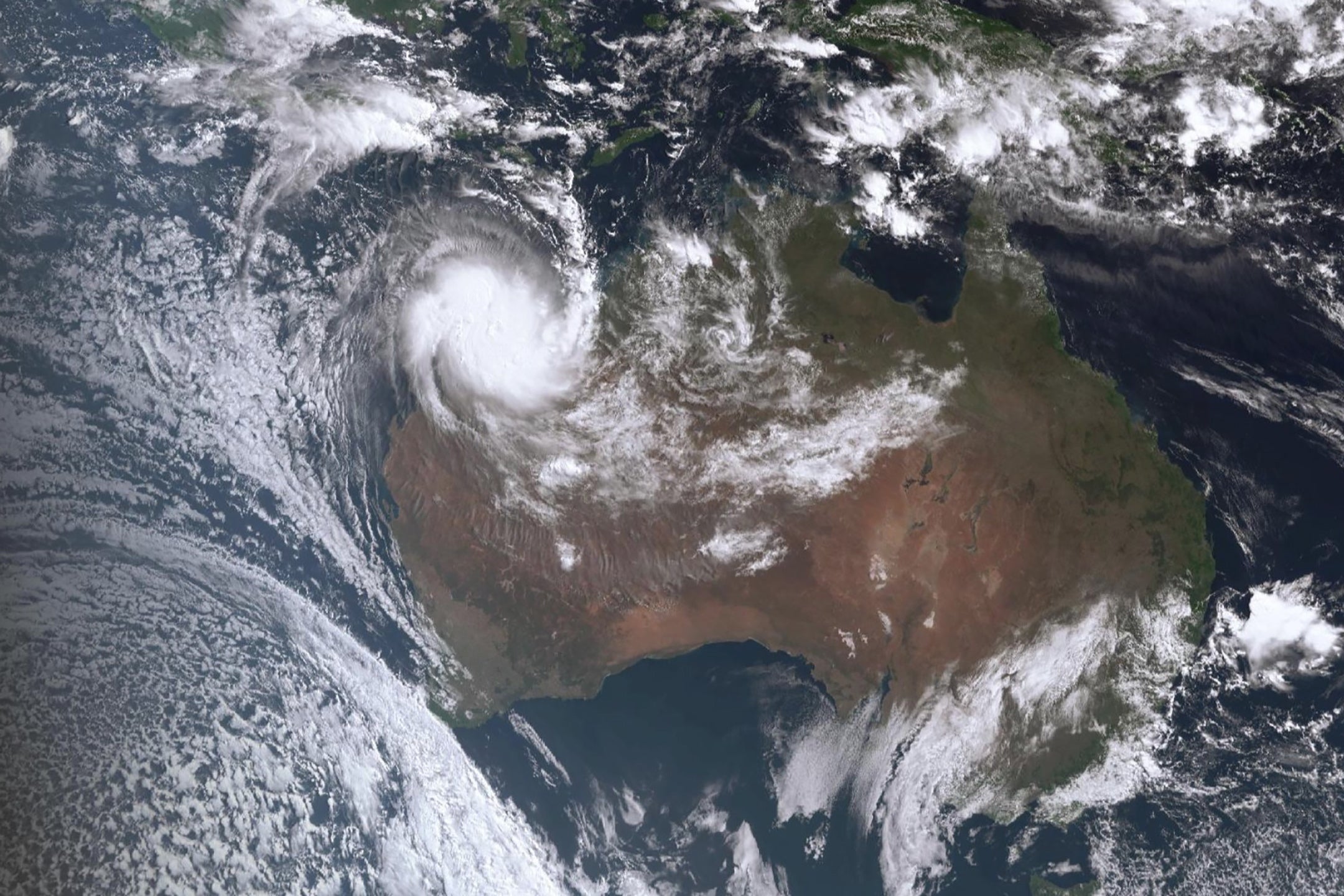Cyclone Ilsa makes landfall in Australia as powerful category 5 storm
Meteorologist describes cyclone as a ‘very intense and dangerous system’

Australia’s most powerful tropical cyclone in eight years made landfall on the nation’s northwest coast, lashing the sparsely populated region with ferocious winds.
Cyclone Ilsa made landfall in the early hours of Friday morning between the iron ore export town of Port Hedland and Wallal Downs Station, a 2,020 sq km cattle ranch, with wind speeds of up to 289km/h.
The cyclone crossed Western Australia state’s Pilbara coast as a severe Category 5 storm, causing damage in its wake that is still being assessed. Ilsa, however, weakened to a Category 3 system just before 4am as it moved inland, according to Australia's Bureau of Meteorology.
The remote Pardoo Roadhouse and Tavern, located 150km northeast of Port Hedland, bore the brunt of the storm, with “extensive damage” reported, according to Department of Fire and Emergency Services Superintendent Peter Sutton.
There were no immediate reports of injuries, however, and no calls for assistance were received by the department.
Peter McCarthy, another Department of Fire and Emergency Services superintendent, confirmed the tavern was in the direct path of the storm. The two owners who remained there overnight are said to be safe.
“They’ve had a pretty uncomfortable, challenging night, and we’re going to get crews out there first thing this morning to check on them,” Mr McCarthy said in an interview with the Australian Broadcasting Corp.
Government meteorologist Dean Narramore described Ilsa as a “very intense and dangerous system”, warning that inland communities could be isolated by flooding.
Port Hedland mayor Peter Carter said dozens of people stayed in an evacuation centre overnight, but most of the city’s 16,000 residents remained in their homes, which are built to withstand cyclones.
Mr Carter emphasised that while the infrastructure was designed to withstand cyclones, flying debris posed a significant threat to property and structures.
Category 5 cyclones are characterised by mean wind speeds exceeding 200km/h, with gusts exceeding 280km/h.
The last Category 5 cyclone to cross the Australian coast was Cyclone Marcia in 2015, which caused extensive damage and cost hundreds of millions of dollars in repairs in the eastern state of Queensland.
Since Cyclone Ilsa weakened to a Category 3 system, its maximum mean wind speeds ranged between 118km/h and 159km/h, with gusts between 165km/h and 224km/h, according to Australia’s weather bureau.
The cyclone is expected to continue weakening as it tracks southeast across the inland regions. Damage assessment and recovery efforts are underway as the impacted areas grapple with the aftermath of the cyclone.
Additional reporting by agencies



Join our commenting forum
Join thought-provoking conversations, follow other Independent readers and see their replies
0Comments